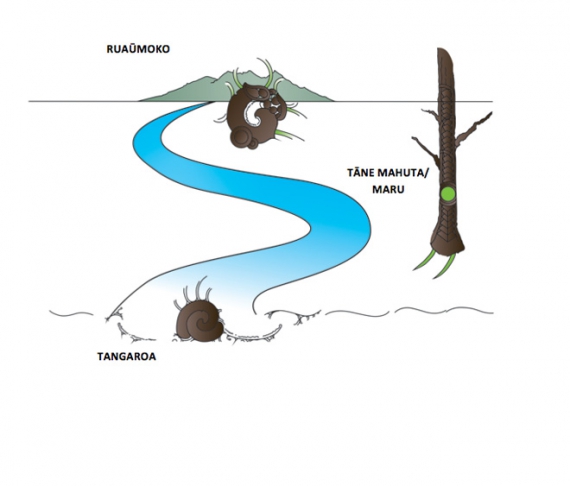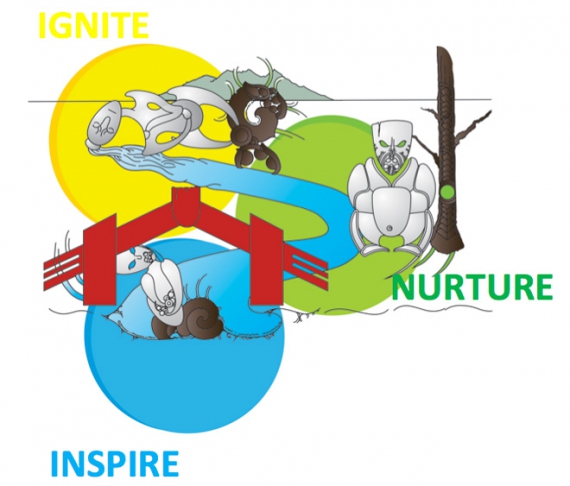 facebook
Twitter
facebook
Twitter
 facebook
Twitter
facebook
Twitter


The strategic model of learning for ‘Te Rerenga ki Tai’ is to IGNITE NURTURE INSPIRE. Essentially, it is a simple framework that can be manipulated and tailored to meet a variety of needs and outcomes. The Te Rerenga ki Tai Model in alignment with the Māori Education Strategy ‘Ka Hikitia’ and the supporting document ‘Tātaiako’ has a strong focus on presence, engagement and achievement. This is what sets the platform for the delivery of the ‘Te Rerenga ki Tai’ Māori Dimensions Program as a vehicle to stimulate community identity, language and culture.

ENVIRONMENTAL MODEL
Te Kāhui Ao makes reference to understanding the greater universe around us. Understanding the natural connection between man and his universe, our universe, the universe we know to be our world. It is about maintaining a birds eye view of the world we live in, so we may better understand its needs. As people of the mountain and people of the river, for us of Whanganui it is about being aware of the world that surrounds us from the ‘mountain to the sea, I am the river and the river is me’. The opportunity here is to reflect upon the natural resources we have in our region and become aware of its significance so that we may become our universe and our universe may become us. To integrate these concepts in to a planned teaching structure, is to better understand the world we live in.

SPIRITUAL MODEL
Te Kāhui Atua acknowledges a greater potential beyond us, yet bound to us. A potential that derives from the land, the sky, from our heavenly guardians and our Kaitiaki, highlighting how important it is to understand the natural world we live in. The world we understand to be ours. It is the acknowledgment of the natural way of being. Everything about us is reflective of our Atua. To understand ‘Te Kāhui Atua’ is to understand with more depth ‘Te Kāhui Ao.’ And by understanding this māori ideology we can found a more attentive understanding of ‘Te Ao Māori.’

WHANGANUI REFLECTIVE MODEL
The key to understanding ‘Te Kāhui Tipua’ is the acknowledgment and understanding of the geographical landscape that surrounds us, awakening them to become a part of our world. It is a reflection upon the physical world we live in, and the spiritial world beyond us with the ability to traverse among the two to maintain that balance. Balance is achieved through the growth of understanding. Understanding key ancestors and narratives that bind together stories that highlight the significance of our region. The success of this particular model is the education of whakapapa specific to us of Whanganui Iwi, our region. The strength lies within the engagement of local environmental resources opening up a deeper appreciation for the significant culture of the local people. A part of this is to understand the significance of our river, Whanganui, and its effect on the people of the region. Its moods, its journey and its magic. Appreciation of the local environment adds strength to the community, adding a sense of grounding and admiration of the iwi concept of what it means to be Whanganui.

TE RERENGA KI TAI MODEL
‘Te Rerenga ki Tai’ is about the journey of a people immersed in the teachings of the past. An educational journey to the future and beyond, well grounded in the practises of our ancestors. The journey from the mountain to the sea, towards the horizon and beyond. Essentially, to understand the journey modelled in this concept is to weave together strands of education across a range of cultural realms. That is the understanding of our natural environments which embrace us with an abundance of resources that influence the community in many forms, physically, spiritually and socially. This opens up pathways that reflect upon the importance of being grounded, a community with a deep sense of belonging, well established in the teachings and surroundings of the Whanganui environment. It is these teachings that prepare us to embrace the true meaning of the whakataukii “Mai i te Kāhui Maunga ki Tangaroa, ko au te awa ko te awa ko au – From the great mountain to the sea, I am the river and the river is me.”
